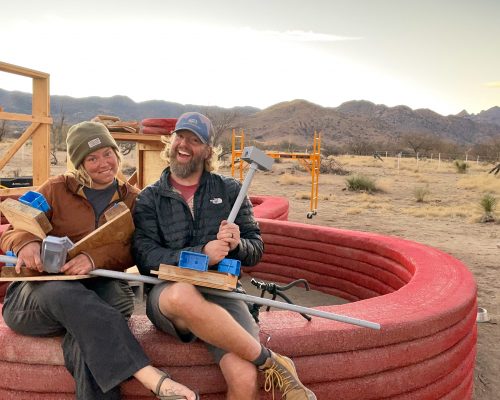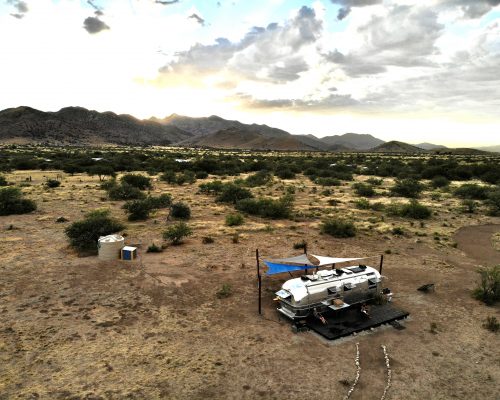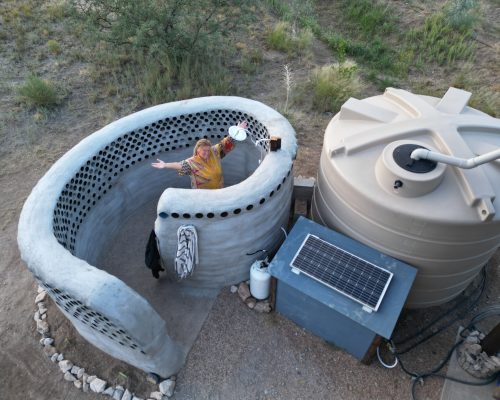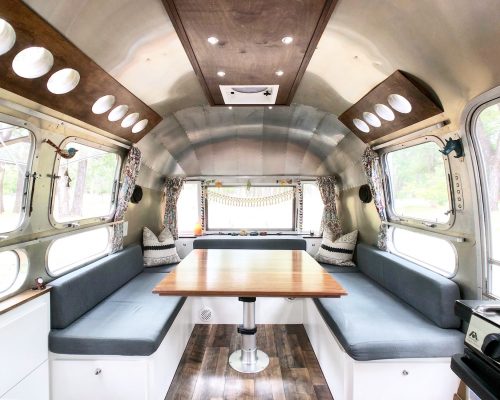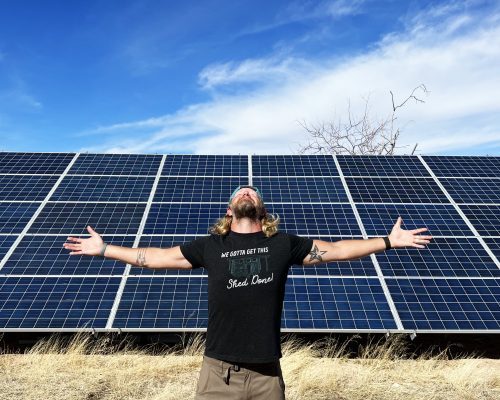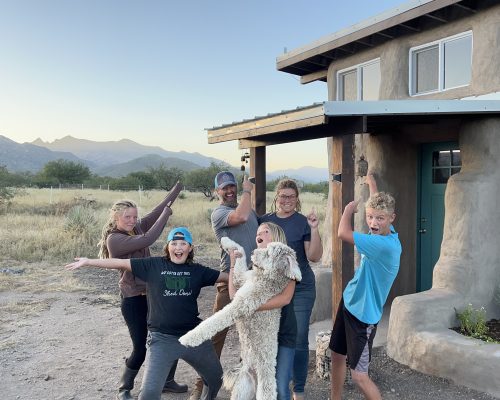Lightning Protection for DIY Off-Grid Solar Power System
Hello friends, today we’re going to tell the story about how a rogue lighting strike cost us thousands of dollars, left us without power for almost a week, and the changes we’re making to our system to make sure it doesn’t happen again.
If you’re not familiar, we installed a large fully off-grid solar system for our desert homestead about two years ago. All DIY, pieced together ourselves.
It’s got 7200W of solar panels, a 28kwh lithium battery bank, and a 5,000w AC Inverter.
The video explaining this system has racked up well over half a million views, and we continue to sell the high res version of the wiring diagram to this day.
Now when we installed the system we did put in lightning protection. The solar ground mount from IronRidge was grounded by design, and our combiner boxes also had lightning suppression built in to shunt to ground.
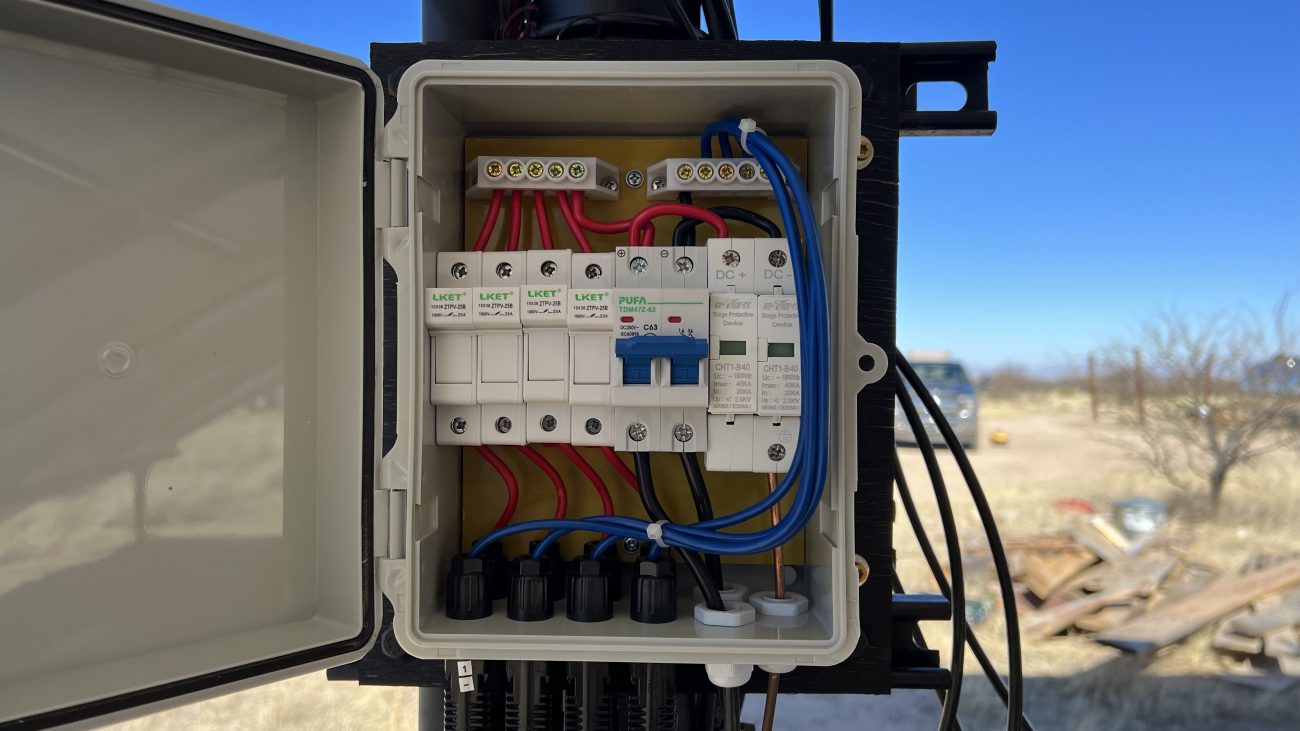
However, last Summer was a historically strong monsoon season with epic storms, and a rogue indirect ground lighting strike took out our Victron inverter, one of our charge controllers, and our BMS display.
This cost us thousands of dollars to replace, and we were without power for nearly a week. It sucked. Real bad.
It also led us to a months long journey researching additional lighting protection, desert soil conditions, warranties and even insurance.
Now that we’ve got some distance, perspective - and new gear - I’m going to walk you through the additional steps we’ve taken to hopefully secure our system against another storm.
We’re updating our downloadable diagrams to reflect this, and want to share some of the details and thought behind this decision.
Download Our Solar Wiring Diagram
Get up close and personal with this super detailed, impeccably illustrated hi-res PDF of our full off-grid power setup with a schematic representation of how everything in our 7200W, 28kWH, 120V off-grid battery and solar system connects together. Includes bonus individual component wiring configs, too!
What did we miss?
The main thing I think we missed the first time around was the erratic ways that lightning can move during a strike. Especially with wire runs 100’ long.
Initially we assumed that the solar panel array would be the most important thing to protect because it’s a big metal target. But it turns out it’s the indirect ground strikes that can cause the most damage.
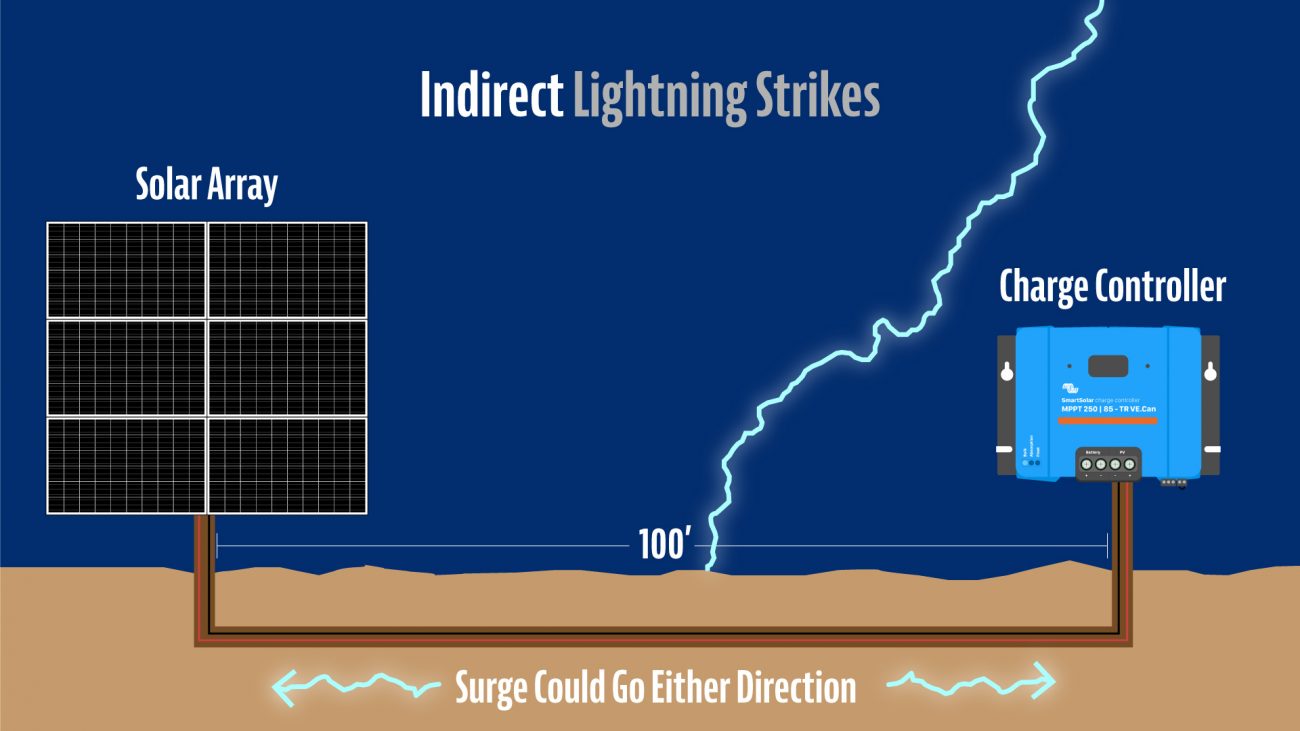
So if lightning hits the ground near your install and energizes your wire it could go either direction. In our case we were protecting our solar panel array, but our charge controllers inside the solar shed were not protected.
Even worse, our AC lines didn’t have protection on either end.
Now look, there are a lot of internet opinions on lightning and grounding, especially combined with fully off grid systems. And there are a ton of products out there that say they protect from lightning, but many of them just don't really do that much. All that to say, after a lot of research, we chose MidNite Solar’s SPD’s or surge protection devices. Here's why.
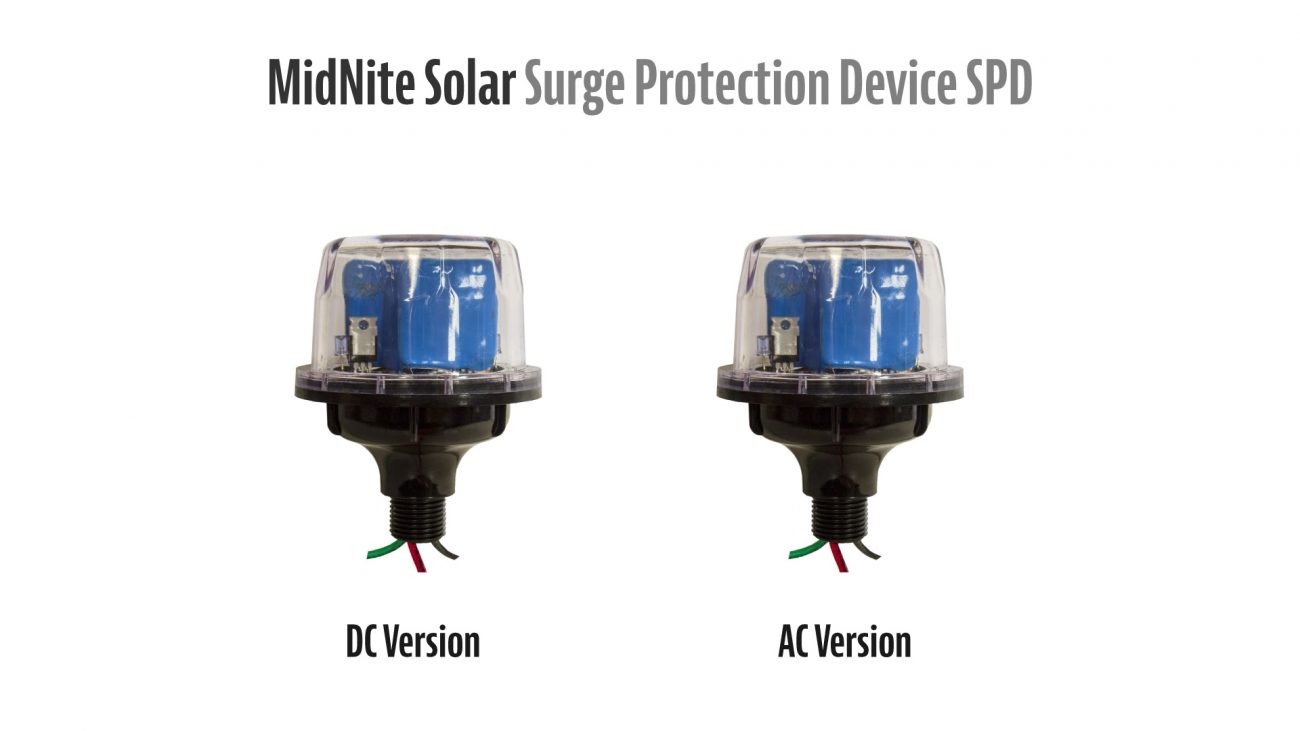
Most fuses and breakers are built for high draws, and not large, fast influxes of voltage like you’d see with a lightning strike. So while we have plenty of fuses and breakers protecting the system internally, a lightning strike just moves too fast for those to react.
The MidNite Solar SPD’s are built to clamp down immediately when high voltage or amperage is detected, protecting whatever device it’s closest to and shunting the surge to the ground.
If you have a lightning strike, the SPD will be unusable once it clamps and shunts to ground. You’ll need to replace it, and while MidNite Solar does have a 5 year warranty, they only cost about $100 which to replace which his a small price to pay to protect expensive gear like inverters and charge controllers.
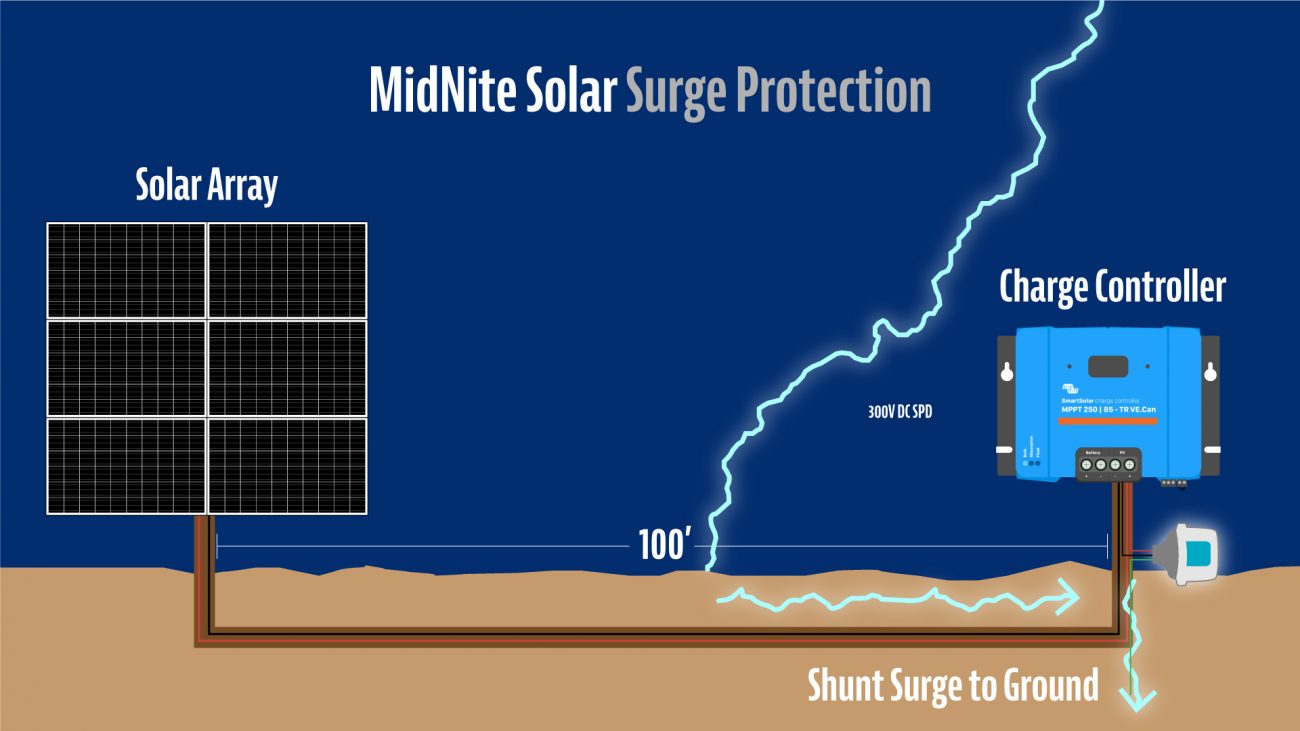
Protecting the DC Side of our System
Let’s start with the DC side. Like we mentioned, we already had lightning suppression breakers in our combiner boxes at the solar panel array. In our case we had two separate runs and two separate charge controllers. Because the wire going into the solar shed was close to 100’, we needed to add a 300V DC SPD device to each charge controller.
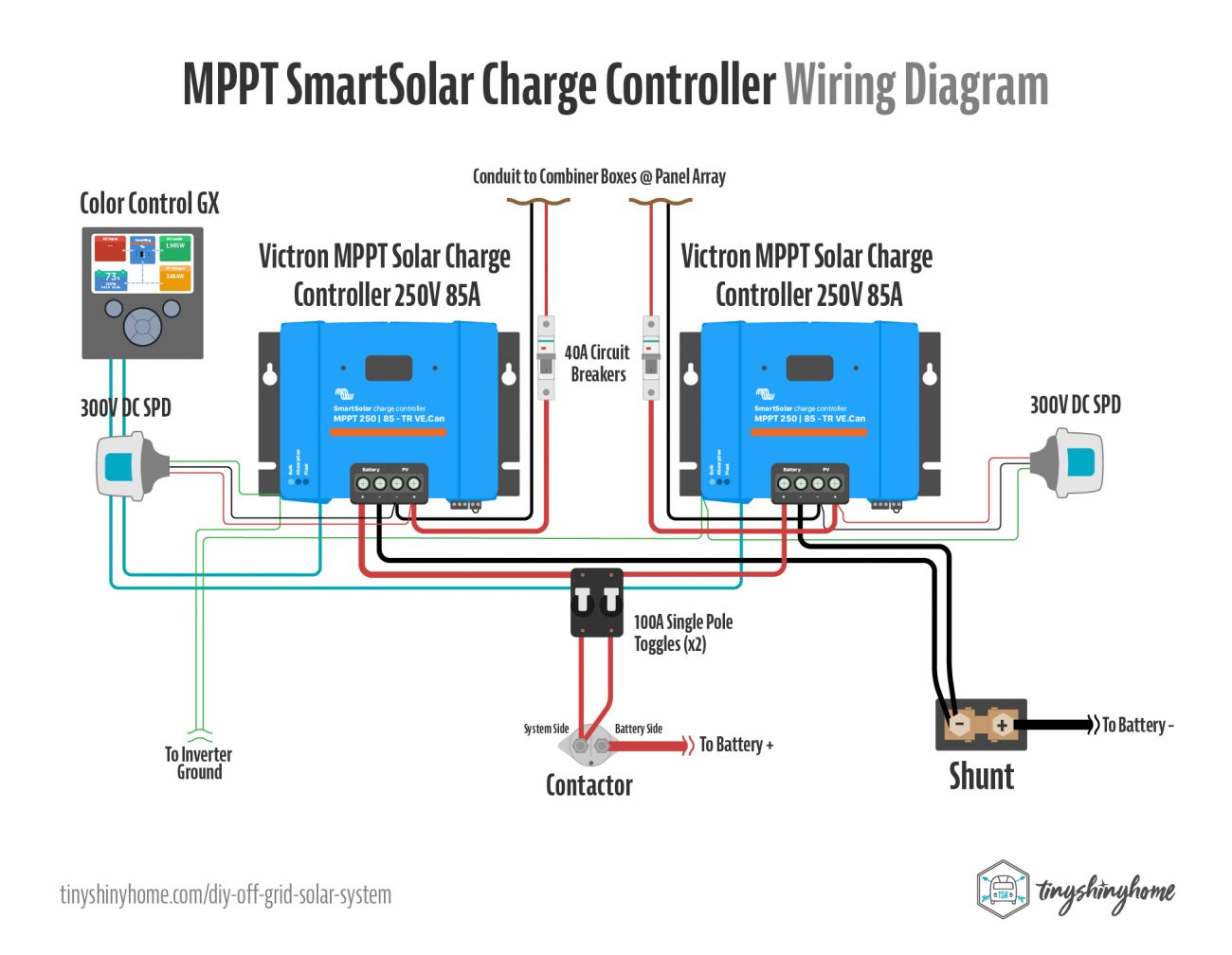
So we ran the positive wire of the SPD to the positive PV connection on the charge controller, the negative wire of the SPD to the negative PV connection on the charge controller, and the ground of the SPD to the ground chassis of the charge controller. In our system all grounds are connected to the earth ground connection on the Victron Inverter and run to a grounding rod outside the building.
When connected properly, we see both blue LED lights.
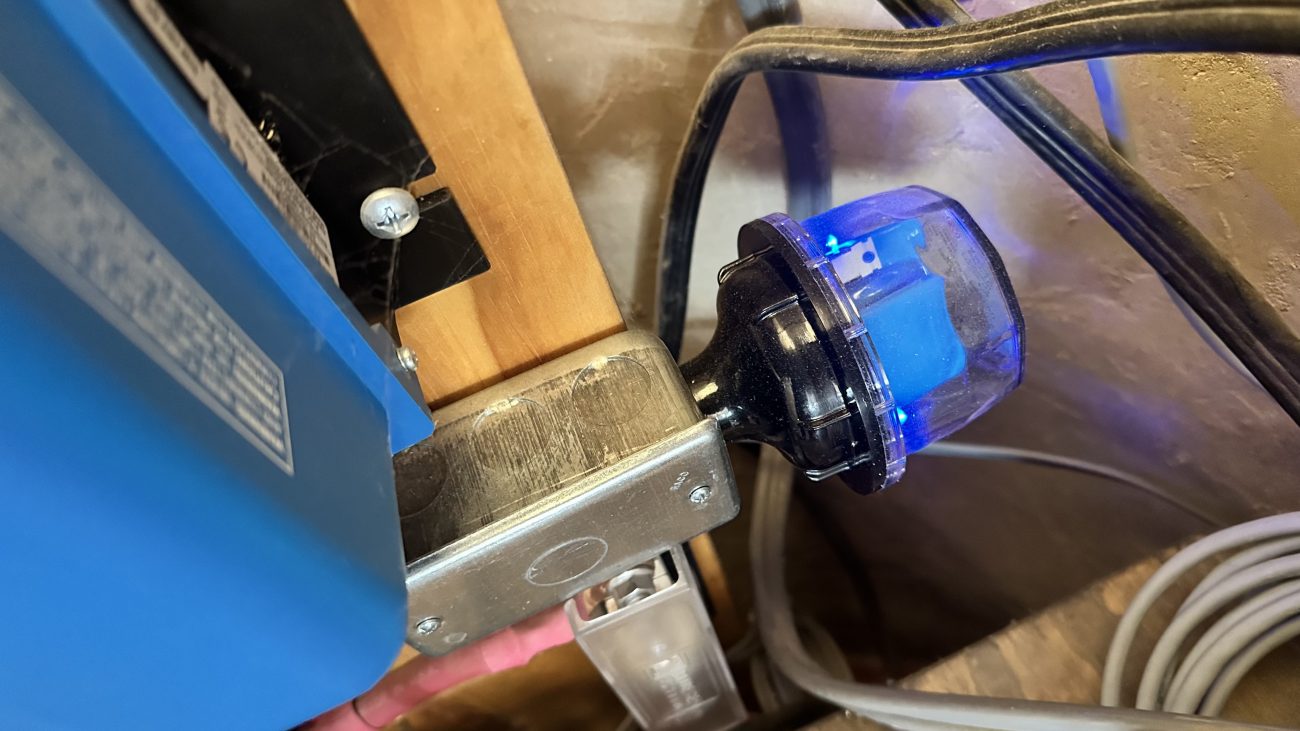
My only complaint with these SPD’s so far is that they are just super large and awkward to install. For our solar panels we had to put them inside a box, but let them hang over our wooden backboard because they were too deep to sit flush.
Protecting the AC Side of our System
Things got even more complicated when it came to the AC side using our Victron Quattro inverter. Its connection system is not nearly as modular as other options on the market with holes you can pop out.
Thankfully we were able to use a free compression clamp to hold the 300V AC SPD in place upside down like this.
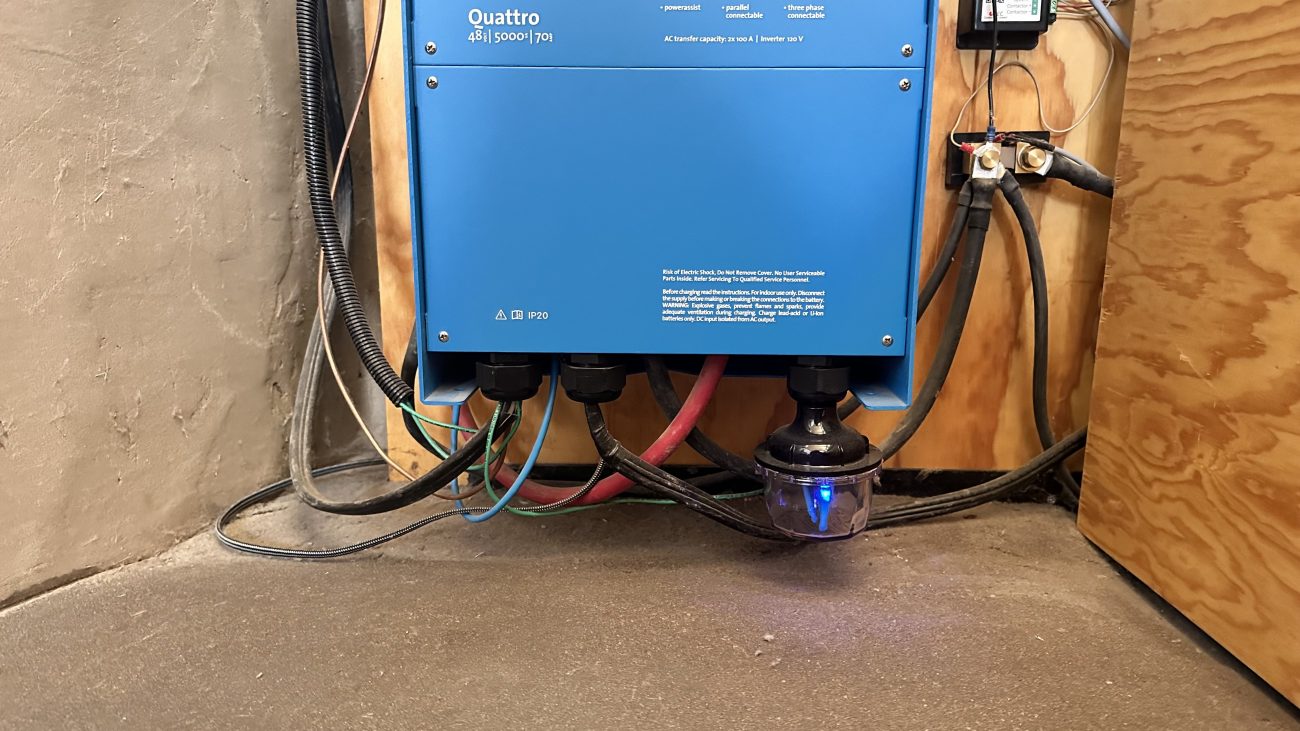
The AC SPD’s are a little different. They have two hot lines and a ground. In our case, with our Victron Quattro, this meant one wire to our Generator In hot wire and one to our AC out hot wire. Then of course the ground wire to earth ground.
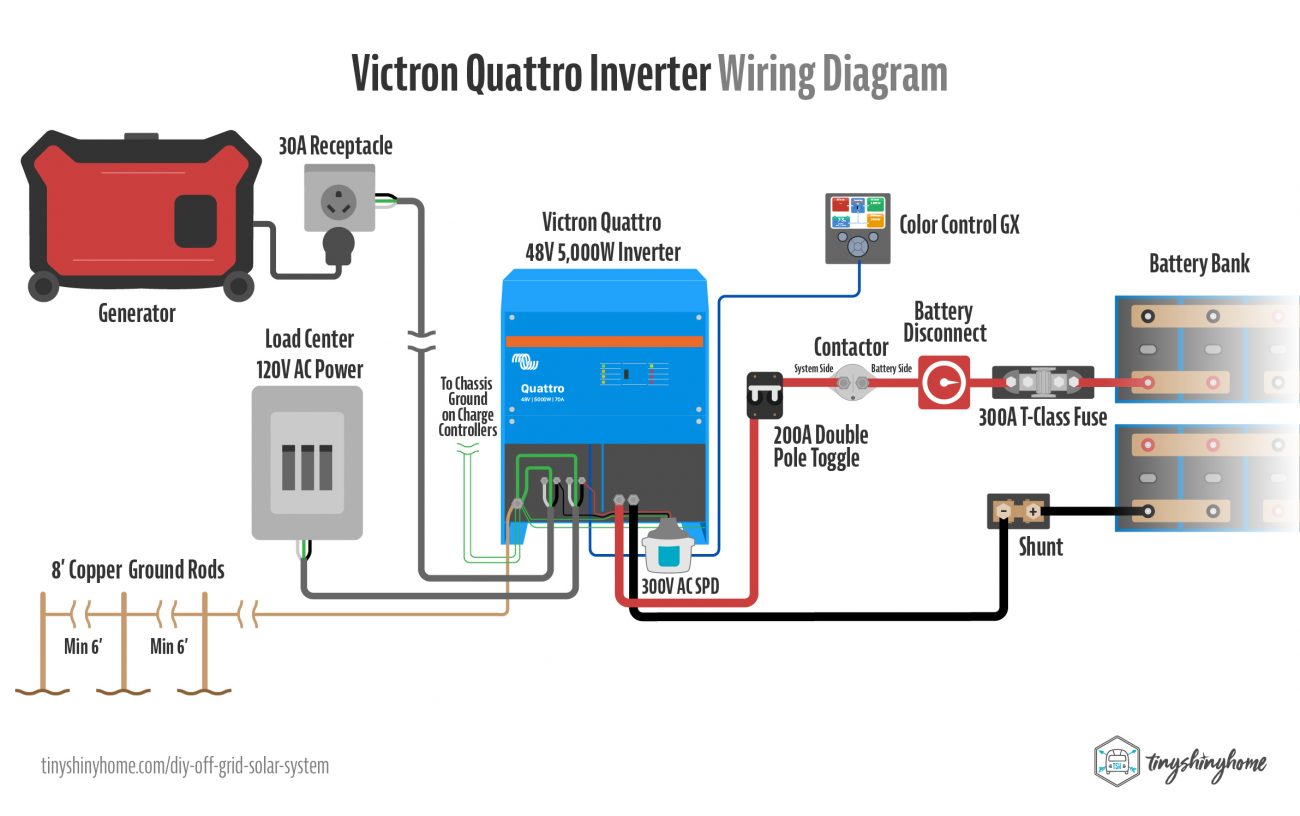
Because of this, we usually only see one LED light turned on protecting our AC out since we rarely use generator backup power. If the generator was on, then both LED’s would be lit.
Now we’re protecting the solar panel array, solar charge controllers, and the inverter. What’s left?
Some might add another DC SPD on their battery bank - though since we’re already protecting the charge controllers (DC in) and Inverter (AC in and out) we didn’t feel it was necessary for our install. We could change our minds on this in the future.
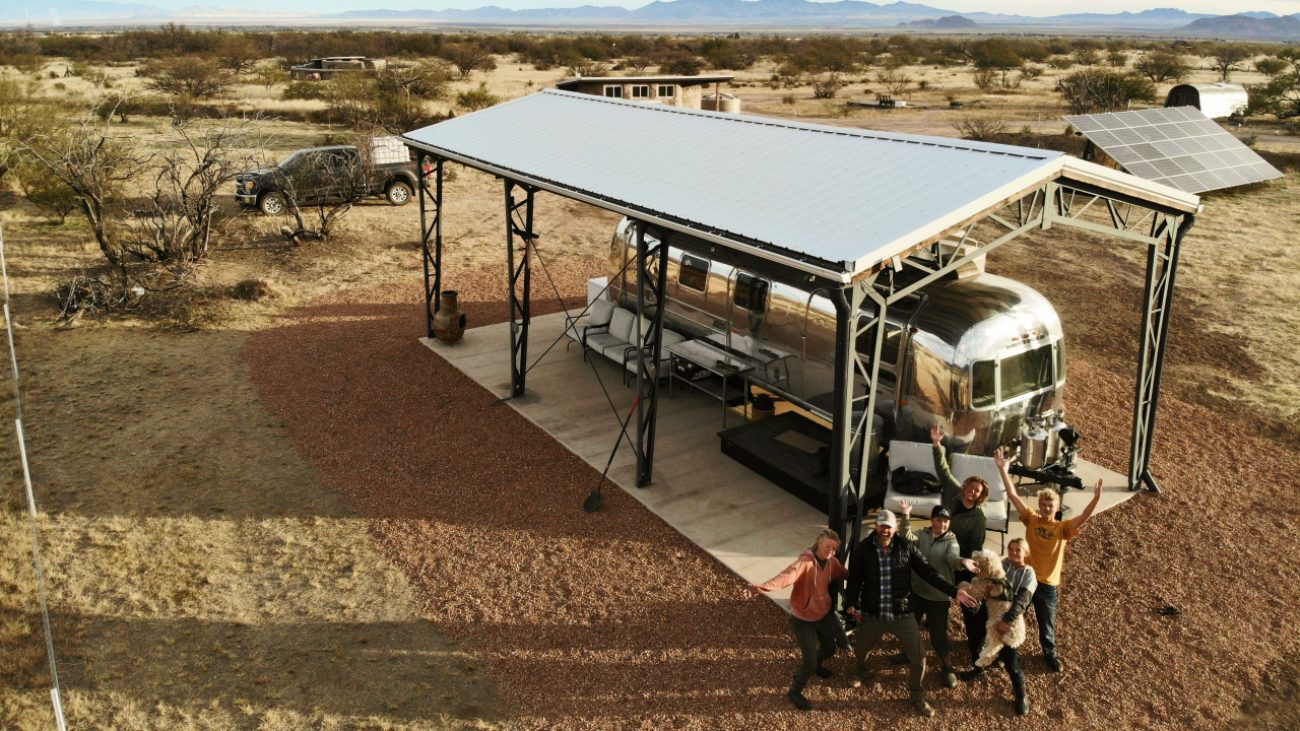
Protecting our Vintage Airstream 30A Power
Recently we ran a 100’ AC line up to our Airstream metal truss cover, and that’s only end of our wire run that isn’t protected. So the last thing we’ll be doing is installing our 300A AC SPD on our electrical box at the Airport.
The AC SPD’s are little more confusing depending on your setup. In this breaker box we have the 100+’ hot wire coming in here. So we’ll run one of the main wires to that lug, and the ground should connect to the ground lug on the box which goes to its own grounding rod.
Since we only have 1 hot leg at 120V, we’re just going to cap this wire and not use it.
When we install the run for our house, then we’ll want to add an additional SPD at that breaker box as well.

Additional Grounding Rods
Oh, and one more thing. As we’ve researched our specific soil type, it’s become apparent that the heavy sand content doesn’t hold enough moisture to make a great connection. And if we’re trying to shunt excess voltage directly to the ground, we want to make sure it has the clearest path possible.
So we put in in at least 2 more 8’ ground rods connected by 6awg copper wire 6’ feet apart.
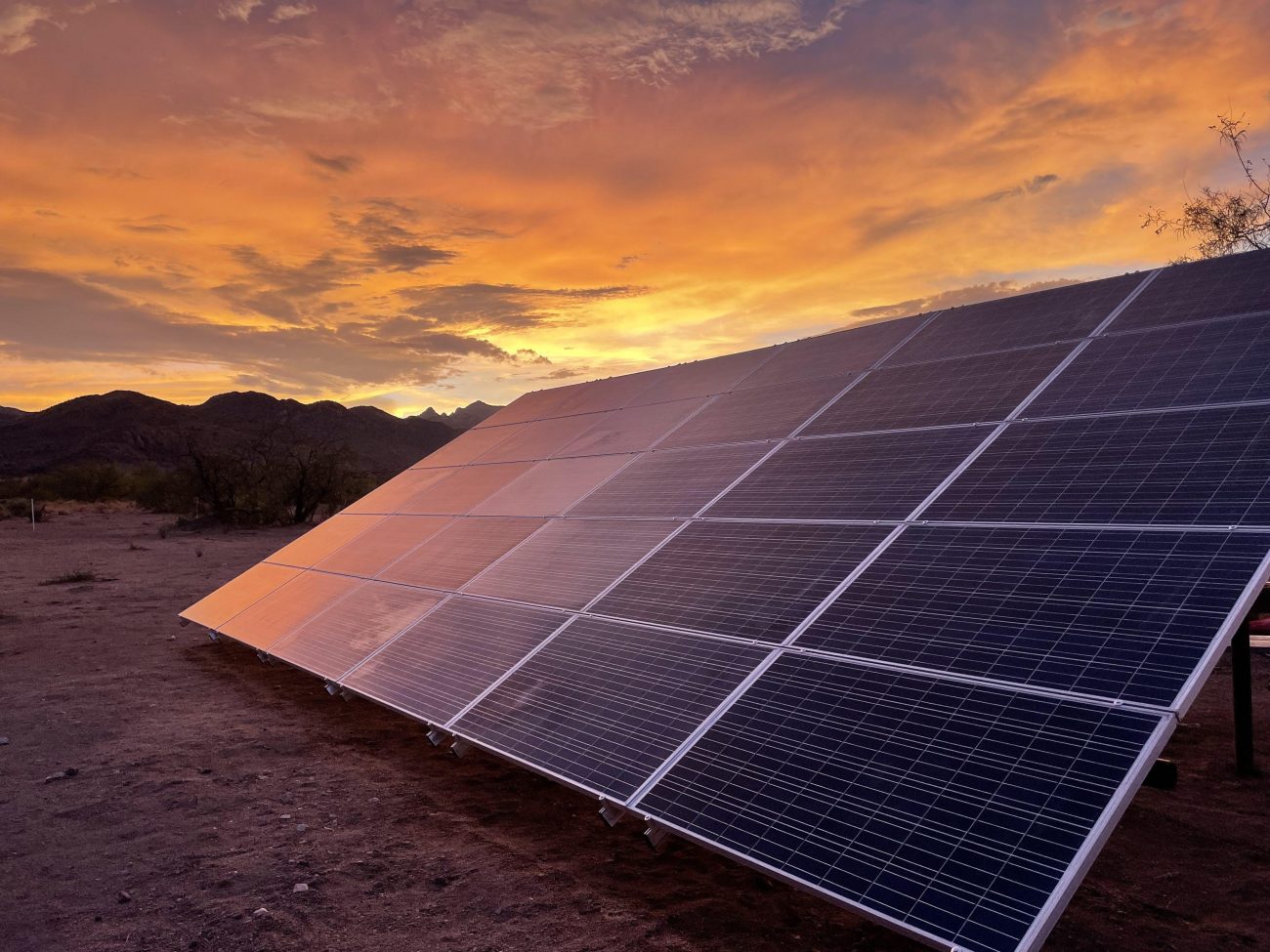
What about Warranties & Insurance?
Why wouldn't Victron or REC cover a lighting strike under warranty?
Well, it would be nearly impossible for them to protect against it. And really it's more of an insurance situation anyway.
Some bundles or kits might come with a warranty, but if you're DIYing and putting multiple components together this kind of scenario wouldn't be covered.
We also spent quite a bit of time looking into whether we could insure our gear - but because of the Owner-Builder opt out here in Cochise County, and the fact that we'll never have a certificate of occupancy on this property, that shut down basically every conversation we tried to have.
If you are going through traditional building methods and inspections then you should be able to get that certificate and have a more productive conversation with an insurance agent.
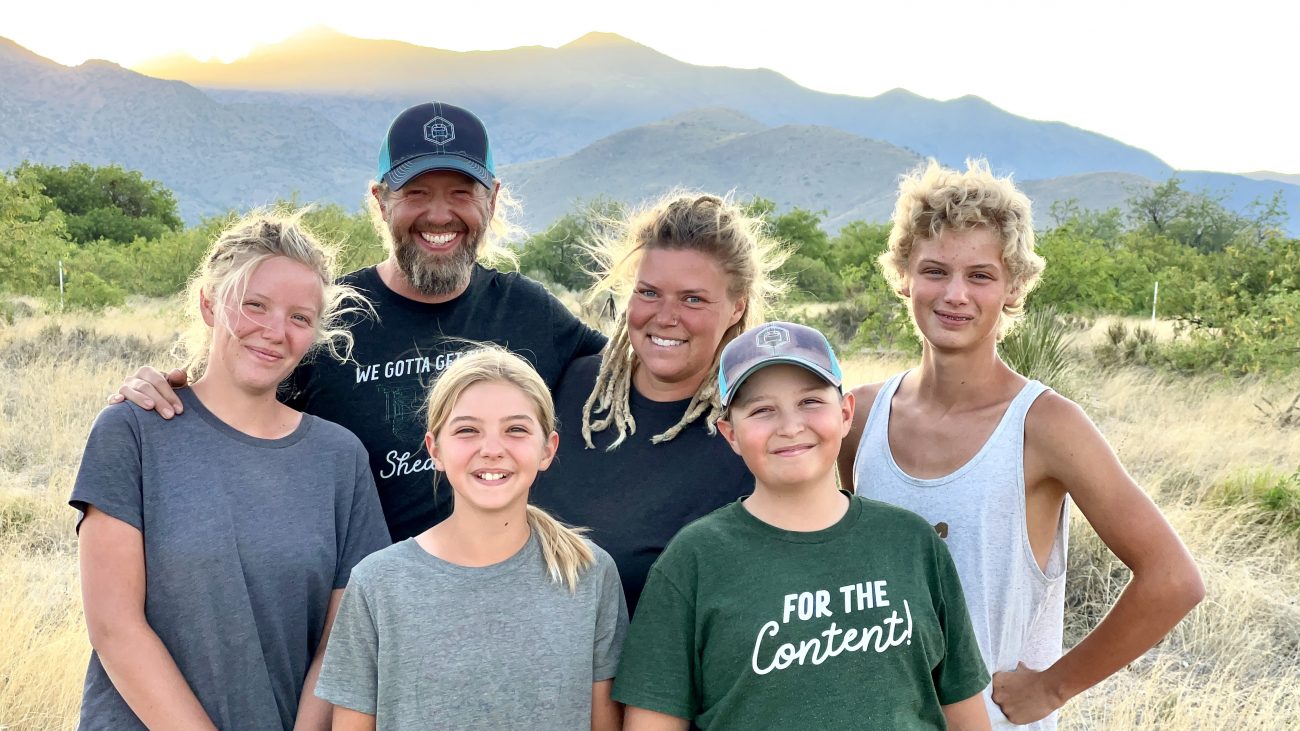
What Did We Learn?
First of all, we learned we needed to update our wiring diagrams! If you’ve already bought the them you can just log back into your account and re-download the new versions with the SPD’s wiring included. And of course if you haven't gotten yourself a copy yet you can do that here:
Download Our Solar Wiring Diagram
Get up close and personal with this super detailed, impeccably illustrated hi-res PDF of our full off-grid power setup with a schematic representation of how everything in our 7200W, 28kWH, 120V off-grid battery and solar system connects together. Includes bonus individual component wiring configs, too!
DIY’ing your own off grid solar system is hard. And just when you think you’ve got every last bit researched and buttoned up, you never know when a storm will wreak havoc on your system and your wallet.
So what are our recommendations?
- Lots of lighting protection
- A healthy savings account
- A backup generator
- Redundant pieces of gear on site for an emergency.
We’ve learned that this journey to living more sustainably and self sufficiently can be humbling. We just have to suck it up, learn from our mistakes, and keep moving forward because those storms are always coming, and you can't let them stop you.
See you next time!
Apparel
Grab a fun, comfy t-shirt & help support our family.
comments powered by Disqus




